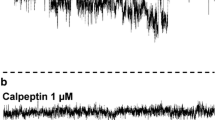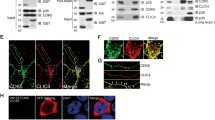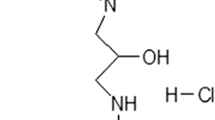Abstract
Mitochondria play an important role in modulating intracellular levels of calcium, and therefore compromised mitochondrial function often leads to disruptions in calcium homeostasis. In this study, the effects of two uncouplers of oxidative phosphorylation, carbonyl cyanide-3-chlorophenylhydrazone (CCCP) and p-trifluoromethoxyphenylhydrazone (FCCP), on calcium-mediated modifications of the microtubule-associated protein, tau, in rat brain slices were examined. Incubation of slices with CCCP or FCCP resulted in an increase in electrophoretic mobility of several of the tau isoforms, with no apparent loss of intact tau or the appearance of degradation products. These data indicated that disrupting mitochondrial function by dissipating the transmembrane potential resulted in the dephosphorylation of tau. This finding was confirmed by using a front phosphorylation assay to demonstrate a CCCP-induced decrease in the phosphorylation state of tau. The dephosphorylation of tau induced by the proton-ionophores appeared to be calcium-dependent since the effect was blocked by EGTA. In addition, the CCCP-induced dephosphorylation of tau was blocked by cyclosporin A, a selective inhibitor of the calcium-dependent phosphatase, calcineurin. These data strongly indicate that tau is a substrate for calcineurin in vivo. Finally, the levels of ATP were depleted to a similar extent in brain slices incubated in the presence of CCCP or CCCP and EGTA. These results demonstrated depletion of ATP alone was not sufficient to stimulate the dephosphorylation of tau in this experimental paradigm.
Similar content being viewed by others
References
Elliott, E., Mattson, M., Vanderklish, P., Lynch, G., Chang, I., and Sapolsky, R. 1993. Corticosterone exacerbates kainate-induced alterations in hippocampal tau immunoreactivity and spectrin proteolysisin vivo. J. Neurochem. 61:57–67.
Saito, K., Elce, J., Hamos, J., and Nixon, R. 1993. Widespread activation of calcium-activated neutral proteinase (calpain) in the brain in Alzheimer disease: A potential molecular basis for neuronal degeneration. Proc. Natl. Acad. Sci. 90:2628–2632.
Mattson, M. 1992. Calcium as sculptor and destroyer of neural circuitry. Exp. Geron. 27:29–49.
Nicotera, P., Bellomo, G., and Orrenius, S. 1992. Calcium-mediated mechanisms in chemically induced cell death. Ann. Rev. Pharmacol. Toxicol. 32:449–70.
Carafoli, E. 1987. Intracellular calcium homeostasis. Ann. Rev. Biochem. 56:395–433.
Martinez-Serrano, A., and Satrustegui, J. 1992. Regulation of cytosolic free calcium concentration by intrasynaptic mitochondria. Mol. Biol. Cell. 3:235–248.
Mattson, M., Zhang, Y., and Bose, S. 1993. Growth factors prevent mitochondrial dysfunction, loss of calcium homeostasis, and cell injury, but not ATP depletion in hippocampal neurons deprived of glucose. Exp. Neurol. 121:1–13.
Bellomo, G., Fulceri, R., Albano, E., Gamberucci, A., Pompella, A., et al. 1991. Calcium-dependent and independent mitochondrial damage in hepatocellular injury. Cell Calcium 12:335–41.
Maro, B., and Bornens, M. 1982. Reorganization of HeLa cell cytoskeleton induced by an uncoupler of oxidative phosphorylation. Nature 295:334–336.
Klymkowski, M. 1988. Metabolic inhibitors and intermediate filament organization in human fibroblasts. Exp. Cell Res. 174:282–290.
Drubin, D., and Kirschner, M. 1986. Tau protein function in living cells. J. Cell Biol. 103:2739–2746.
Kosik, K., and Caceres, A. 1991. Tau protein and the establishment of an axonal morphology. J. Cell Sci. 15:69–74.
Kosik, K., Joachim, C., and Selkoe, D. 1986. Microtubule-associated protein tau is a major antigenic component of paired helical filaments in Alzheimer's disease. Proc. Natl. Acad. Sci. USA 83:4044–4048.
Blass, J., Baker, A., Ko, L., and Black, R. 1990. Induction of Alzheimer antigens by an uncoupler of oxidative phosphorylation. Arch. Neurol. 47:864–869.
Love, S., Quiyada, S., Cole, E., and Terry, R. 1988. Alz-50, ubiquitin, and tau immunoreactivity of neurofibrillary tangles, Pick bodies and Lewy bodies. J. Neuropathol. Exp. Neurol. 47:393–405.
Goedert, M., Spillantini, M., and Jakes, R. 1991. Localization of the Alz-50 epitope in recombinant human microtubule-associated protein tau. Neurosci. Lett. 126:149–154.
Wallace, D. 1992. Mitochondrial Genetics: A paradigm for aging and degenerative diseases? Science 256:628–632.
Lin, F., Lin, R., Wisniewski, H., Hwang, Y., Grundke-Iqbal, I., Healy-Louie, G., and Iqbal, K. 1992. Detection of point mutations in codon 331 of mitochondrial NADH dehydrogenase subunit 2 in Alzheimer's brains. Biochem. Biophys. Res. Comm. 182:238–246.
Shoffner, J., Watts, R., Juncos, J., Torroni, A., and Wallace, D. 1991. Mitochondrial oxidative phosphorylation defects in Parkinson's disease. Ann. Neurol. 30:332–339.
Swanson, S., Born, T., Zydowsky, L., Cho, H., Chang, H., Walsh, C., and Rusnak, F. 1992. Cyclosporin-mediated inhibition of bovine calcineurin by cyclophilins A and B. Proc. Natl. Acad. Sci. 89:3741–3745.
Dawson, T., Steiner, J., Dawson, V., Dinerman, J., Uhl, G., and Snyder, S. 1993. Immunosuppressant FK506 enhances phosphorylation of nitric oxide synthase and protects against glutamate neurotoxicity. Proc. Natl. Acad. Sci. 90:9808–9812.
Lowry, O., Rosebrough, N., Farr, A., and Randall, R. 1951. Protein measurement with the folin phenol reagent. J. Biol. Chem. 193:265–275.
Towbin, H., Staehelin, T., and Gordon, J., 1979. Electrophoretic transfer of protein from polyacrylamide gels to nitrocellulose sheets: procedures and some applications. Proc. Natl. Acad. Sci. 76:4354–4356.
Halpain, S., and Greengard, P. 1990. Activation of NMDA receptors induces rapid dephosphorylation of the cytoskeletal protein MAP-2. Neuron 5:237–246.
Lindwall, G., and Cole, R. 1984. Phosphorylation affects the ability of tau protein to promote microtubule assembly. J. Biol. Chem. 259:5301–5305.
Lee, G. 1990. Tau protein: An update on structure and function. Cell Motility and the Cytoskeleton 15:199–203.
Szendrei, G., Lee, V., and Otvos, L. 1993. Recognition of the minimal epitope of monoclonal antibody Tau-1 depends on the presence of a phosphate group but not its locations. J. Neurosci. Res. 34:243–249.
Kowall, N., and Kosik, K. 1987. Axonal disruption and aberrant localization of tau protein characterize the neuropil pathology of Alzheimer's disease. Ann. Neurol. 22:639–643.
Young, A., Sakurai, R., Albin, R., Makowiec, R., and Penney, J. 1991. Excitatory Amino Acid Receptor Distribution: Quantitative Autoradiographic Studies. Pages 19–29,in Wheal, H., and Thomson, A. (eds.), Excitatory Amino Acids and Synaptic Transmission, Academic Press Limited, San Diego, CA.
Richter, C., and Kass, G. 1991. Oxidative stress in mitochondria: its relationship to cellular homeostasis, cell death, proliferation, and differentiation. Chem. Biol. Interact. 77:1–23.
Heytler, P. 1979. Uncouplers of oxidative phosphorylation. Meth. Enzymol. 55:462–471.
McLaughlin, S., and Dilger, J. 1980. Transport of protons across membranes by weak acids. Physiol. Rev. 60:825–863.
Jensen, J., and Rehder, V. 1991. FCCP releases Ca++ from a non-mitochondrial store in an identifiedHelisoma neuron. Brain Research 551:311–314.
Duchen, M., Valdeolmillos, M., O'Neill, S., and Eisner, D. 1990. Effects of metabolic blockade on the regulation of intracellular calcium in dissociated mouse sensory neurones. J. Physiol. 424:411–426.
Thayer, S., and Miller, R. 1990. Regulation of the intracellular free calcium concentration in single rat dorsal root ganglion neurons in vitro. J. Physiol. 425:85–115.
Goto, S., Yamamoto, H., Fukunaga, K., Iwasa, T., Matsukado, Y., and Miyamoto, E. 1985. Dephosphorylation of microtubuleassociated protein 2, tau factor, and tubulin by calcineurin. J. Neurochem. 45:276–283.
Cohen, P. 1989. The structure and regulation of protein phosphatases. Annu. Rev. Biochem. 58:453–508.
Lui, J., Farmer, J., Lane, W., Friedman, J., Weissman, I., and Schreiber, S. 1991. Calcineurin is a common target of cyclophilin-cyclosporin A and FKBP-FK506 complexes. Cell 66:807–815.
Johnson, G. 1992. Differential phosphorylation of tau by cAMP-dependent protein kinase and Ca++/calmodulin-dependent protein kinase II: Metabolic and functional consequences. J. Neurosci. 59:2056–2062.
Litersky, J., and Johnson, G. 1992. Phosphorylation by cAMP-dependent protein kinase inhibits the degradation of tau by calpain. J. Biol. Chem. 267:1563–1568.
Goedert, N., Cohen, E., Jakes, R., and Cohen, P. 1992. p42 map kinase phosphorylation sites in microtubule-associated protein tau are dephosphorylated by protein phosphatase 2 A1. FEBS 312:95–99.
Liu, W., Moore, W., Williams, R., Hall, F., and Yen, S. 1993. Application of synthetic phosphopeptides to identify phosphorylation sites in a subregion of the tau molecule which is modified in Alzheimer's disease. J. Neurosci. Res. 34:371–376.
Perlmutter, L., Gall, C., Baudry, M., and Lynch, G. 1990. Distribution of calcium-activated protease calpain in rat brain. J. Comp. Neurol. 296:269–276.
Johnson, G., Jope, R., and Binder, L. 1989. Proteolysis of tau by calpain. Biochem. Biophys. Res. Comm. 163:1505–1511.
Author information
Authors and Affiliations
Rights and permissions
About this article
Cite this article
Norman, S.G.P., Johnson, G.V.W. Compromised mitochondrial function results in dephosphorylation of tau through a calcium-dependent process in rat brain cerebral cortical slices. Neurochem Res 19, 1151–1158 (1994). https://doi.org/10.1007/BF00965149
Accepted:
Issue Date:
DOI: https://doi.org/10.1007/BF00965149




